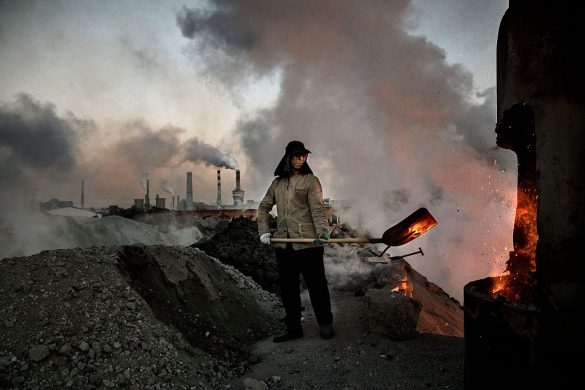En række klimaorganisationer har taget yderst positivt imod et nyt fælles klimaudspil fra Kina og USA.
I den fælles erklæring lover de to giganter at samarbejde om at sætte den nye internatioale klimaaftale, Paris-aftalen, i kraft. Selvom verdens nationer blev enige om aftalen i den franske hovedstad i december, er kloden stadig ikke reddet.
55 lande, der dækker 55% af de globale udledninger af klimaskadelige gasser skal ratificere aftalen, før den kan træde i kraft.
FN’s Generalsekretær Ban Ki-moon har inviteret verdens nationer til officiel ceremoni d. 22. april, hvor de har mulighed for at underskrive aftalen.
De to nationer lover i erklræingen at underskrive aftalen ved ceremonien.
Man kan læse erklæringen her:
Det følgende er en række udtalelser fra amerikanske og kinesiske kilder.
“The United States and China are again taking the lead in moving the world toward a low-carbon future. Just as Presidents Obama and Xi helped the paved the way for a landmark agreement in Paris, they’re now helping to ensure the agreement quickly comes into force.
Again, the world’s two largest economies are together acknowledging the rising risks of climate change and the urgency of a low-carbon transition.
Other countries should also move quickly to formally join the Paris Agreement and to advance the domestic policies needed to meet their targets and lay the foundation for deeper emission reductions in the future.”
– Bob Perciasepe, President, Center for Climate and Energy Solutions
“The statement by Presidents Obama and Xi represents another positive contribution from the U.S. and China to making progress on climate change together.
Their joint commitment to ensure the Paris Agreement enters into force ‘as early as possible this year’ sends a strong signal to other countries. So does their mention of both countries continuing their efforts to steer investment flows away from carbon-intensive technologies like coal and toward renewable energy alternatives.
“Given China’s current leadership role in the G-20, the call for ‘strong climate and clean energy outcomes’ at the Hangzhou summit in September is particularly significant, though much work remains to be done to achieve positive outcomes at that meeting.”
– Alden Meyer, Director of Strategy and Policy, Union of Concerned Scientists
“The joint statement that the United States and China will sign and join the Paris Agreement as early as possible this year sends an extremely powerful signal. This demonstrates continued momentum from Paris and an ongoing commitment by the United States and China to collaborate and drive climate action forward on the global stage.”
“This joint statement cements the role that climate plays in the US-China relationship. It shows the confidence that both countries have in each other’s ability to deliver on their climate commitments.”
“This announcement will foster greater support for the Paris Agreement in the final weeks ahead of the signing ceremony in New York and help drive action on the ground to tackle climate change.”
– David Waskow, Director, International Climate Initiative, World Resources Institute
"The joint statement has symbolic significance for the global effort to curb greenhouse has emissions. It indicates that President Obama intends to make the US's renewed participation in the global climate regime an important part of his legacy. The choice of making a joint Presidential statement with China reflects his consistent strategy. He wants to signal to the American public that both the US and China are subject to shared obligations and commitments.”
– Gao Feng, Special Representative of Climate Change, Ministry of Foreign Affairs (China)
"The joint statement covers the issues of hydrofluorocarbons (HFC) and the aviation industry, two issue areas not included in the UNFCCC framework. It indicates the remarkable comprehensiveness and depth of US-China cooperation on climate change.
It is also a reflection of strengthened domestic actions against climate change within the two countries. Even though the newly unveiled 13th Five Year Plan does not set its carbon intensity target against a 2005 baseline, our estimation is that the new target would actually bring the country's carbon intensity down by 48-50% from 2005 levels before 2020, a much more ambitious pathway compared to China's 40-45% pledge at the Cancun climate negotiation.”
– Zou Ji, Deputy Director, National Center for Climate Change Strategy and International Cooperation (NCSC)
"This is the third joint statement between the world's two largest carbon emitters since 2014. Together, the two countries account for 40% of world emissions. Clearly it intends to accelerate the process for the Paris Agreement to come into effect.
The commitment by the two countries to clear the Agreement within their respective political contexts as soon as possible this year indicates that the Paris Agreement will enjoy a much smoother passage toward global participation than the Kyoto Protocol, its predecessor.
As the host nation of this year's G20 summit, the joint statement is also a sign that China will play a proactive, positive global role in strengthening the long-term climate commitments and actions of all nations.”
– Yu Jie, Senior Climate Strategist, China Dialogue
"The joint statement makes reference to strictly controlling public investment flowing into high-pollution, carbon-intensive projects. This is an issue that worries the Chinese government at the moment.
The inefficient and wasteful investments over the past eight years have turned out to be a heavy burden to China’s economy and from now on, we should never allow the recurrence of such inefficient investments.
Our research has proved that it’s risky not to advance along the low-carbon pathway. Low-carbon development is the most cost-effective and most beneficial pathway for the country’s growth. We should resolutely press ahead along this line.”
– Dr. Jiang Kejun, Senior Researcher, Energy Research Institute under the National Development and Reform Commission















